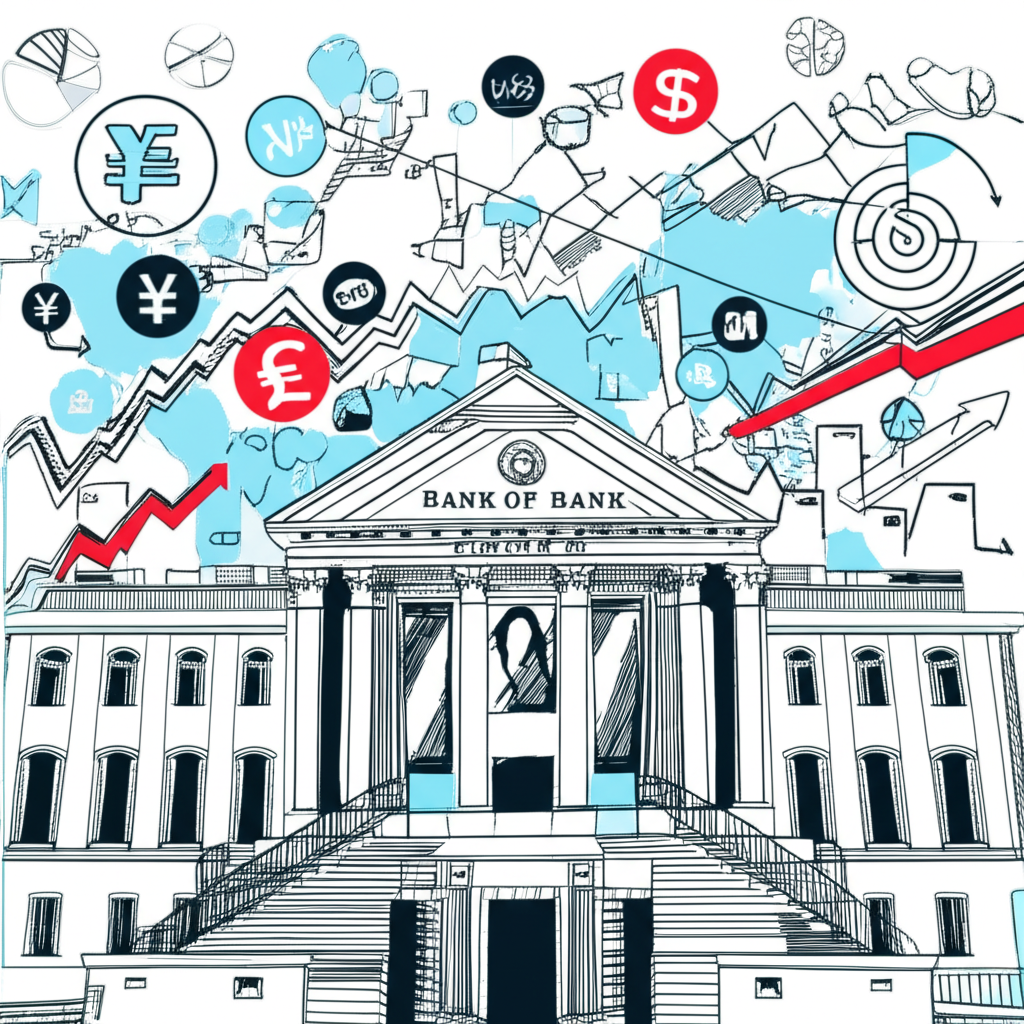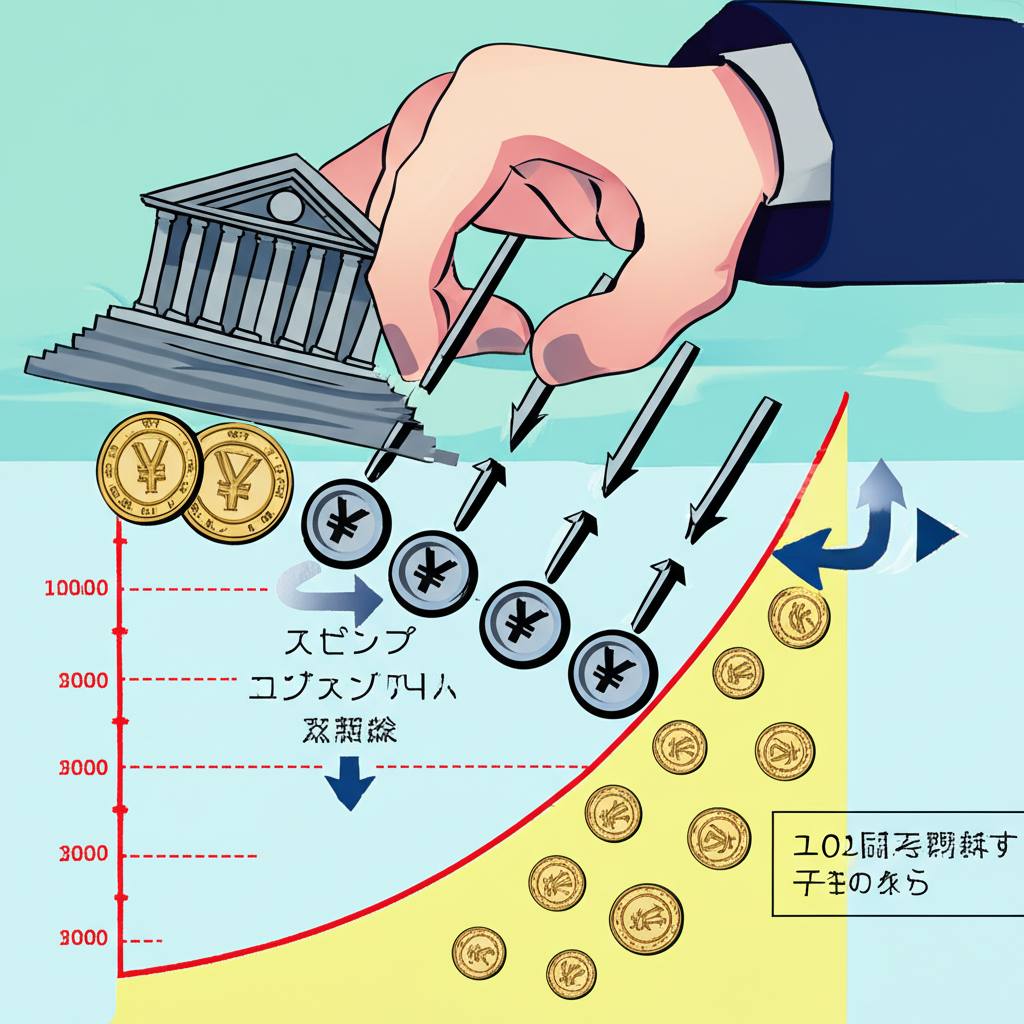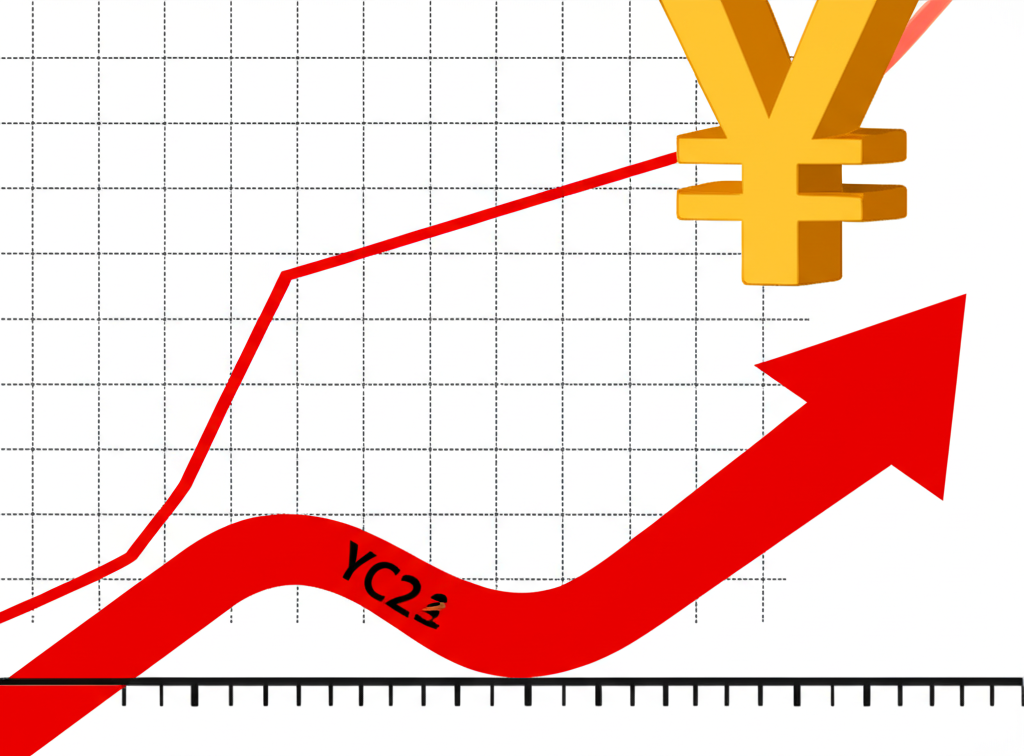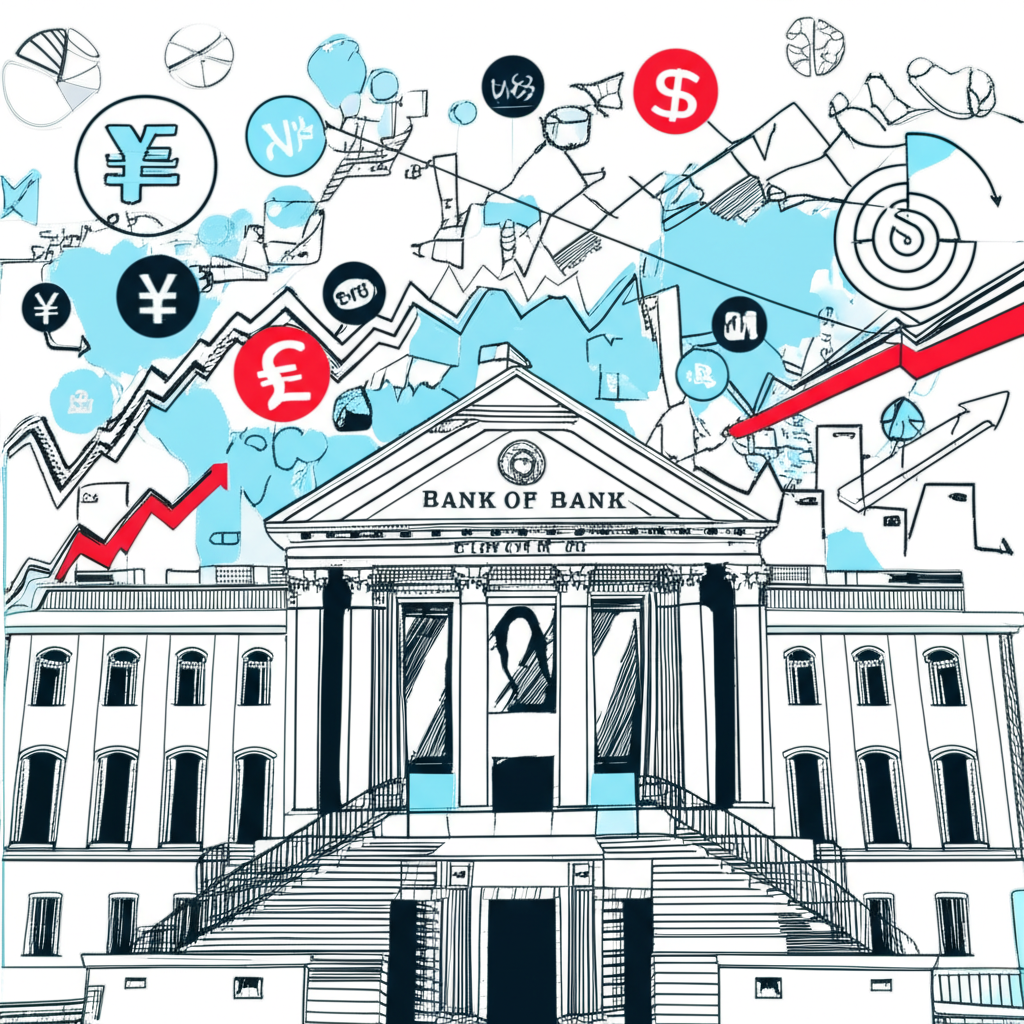Introduction: Understanding the Japan Rate Decision

The Bank of Japan (BOJ) stands at the heart of the nation’s financial system, shaping not only domestic economic conditions but also sending ripples across global markets through its monetary policy choices. Among these, the interest rate decision remains one of the most anticipated events for traders, investors, and analysts worldwide. Unlike routine adjustments, these decisions reflect a careful calibration of economic data, inflation trends, wage dynamics, and global financial shifts—all under the mandate to secure price stability and a resilient financial infrastructure. As Japan emerges from decades of ultra-loose policy, the significance of each rate announcement has only intensified. This guide unpacks the mechanics behind the BOJ’s strategy, traces its evolution, examines recent turning points, and offers insight into what lies ahead in a new era of monetary normalization.
What is the Bank of Japan (BOJ) and Its Monetary Policy Framework?

As Japan’s central bank, the BOJ is entrusted with maintaining stable prices, ensuring the integrity of the financial system, and supporting efficient payment and settlement mechanisms. To fulfill this mandate, it deploys a range of instruments that have grown increasingly unconventional over time. For much of the past two decades, Japan’s policy framework was defined by extraordinary measures aimed at overcoming persistent deflation and sluggish growth.
Central to this effort was Yield Curve Control (YCC), introduced in 2016, which allowed the BOJ to cap the 10-year Japanese Government Bond (JGB) yield near zero by actively purchasing bonds as needed. This was paired with Quantitative and Qualitative Easing (QQE), a large-scale asset purchase program that included JGBs, exchange-traded funds (ETFs), and Japan real estate investment trusts (J-REITs). Another key mechanism was the negative interest rate policy (NIRP), under which the BOJ charged financial institutions for holding excess reserves, effectively pushing rates below zero to stimulate lending and investment.
While these tools were instrumental in preventing economic stagnation, they also distorted market dynamics and raised concerns about long-term sustainability. The shift in March 2024 marked a pivotal departure: the BOJ abandoned both NIRP and YCC, signaling confidence in a self-sustaining recovery. Though no longer active, the legacy of these policies continues to shape market expectations and the trajectory of future decisions.
Current Japan Interest Rate and Recent Policy Changes

In a landmark move, the Bank of Japan ended its negative interest rate era in March 2024 by raising the short-term policy rate target from -0.1% to a range of 0% to 0.1%. This marked the first rate hike in 17 years and represented a historic reversal of the ultra-accommodative stance that had defined Japanese monetary policy since the early 2000s. Accompanying this shift, the BOJ formally discontinued Yield Curve Control and ceased regular purchases of ETFs and J-REITs—steps that underscored a broader commitment to policy normalization.
The decision was driven by growing confidence in the economy’s underlying strength. After years of falling short, inflation reached and sustained the BOJ’s 2% target, supported by robust wage increases during the annual spring shuntō negotiations. These developments suggested the emergence of a demand-driven inflation cycle, a key precondition for tightening policy without derailing growth.
Markets responded swiftly. The Japanese yen strengthened notably against major currencies, particularly the U.S. dollar, reflecting improved yield differentials. Japanese government bond yields experienced volatility as traders adjusted to the end of artificial caps, while equity markets saw mixed reactions—exporters faced headwinds from a stronger yen, while domestic-focused firms benefited from rising consumer spending.
Historical Japan Interest Rates: A Journey Through Decades of Deflation and Easing

Japan’s monetary history is unlike any other major economy. The path from moderate rates in the 1980s to near-zero and negative territory was shaped by the collapse of the asset bubble in the early 1990s, which ushered in a prolonged period of deflation and weak demand. In response, the BOJ began lowering rates steadily, culminating in the introduction of a zero interest rate policy in 1999—the first among developed nations to take such a step.
The global financial crisis of 2008 further deepened the need for stimulus. Though briefly paused between 2006 and 2007, quantitative easing resumed with greater intensity. A turning point came in 2013 with the launch of QQE under Governor Haruhiko Kuroda, who prioritized aggressive asset purchases to flood the economy with liquidity and break the deflationary mindset. The goal was clear: achieve a durable 2% inflation target.
Despite some progress, inflation remained stubbornly below target for years. In 2016, the BOJ doubled down by introducing negative interest rates and pairing them with YCC to influence both short- and long-term yields. These measures kept borrowing costs ultra-low and supported government debt sustainability, but they also compressed bank margins and distorted bond market pricing.
The March 2024 policy shift represents a potential inflection point—one that may signal the beginning of the end of Japan’s era of extraordinary easing. Whether this normalization can be sustained will depend on the resilience of wage growth and the persistence of inflation without central bank intervention.
Key Milestones in BOJ Monetary Policy
- 1999: Implementation of zero interest rate policy to combat deflation.
- 2001–2006: First phase of quantitative easing, targeting the monetary base rather than interest rates.
- 2013: Launch of Quantitative and Qualitative Easing (QQE) under Governor Kuroda, expanding asset purchases beyond bonds.
- 2016: Introduction of negative interest rates and Yield Curve Control to deepen stimulus.
- 2021–2022: Gradual widening of the YCC band, indicating increased flexibility and reduced intervention.
- March 2024: Termination of negative rates and YCC, with the policy rate moved to 0–0.1%, marking the start of policy normalization.
The BOJ Economic Calendar: When Are Decisions Made?
The Bank of Japan typically convenes eight Monetary Policy Meetings (MPMs) each year, usually spanning two days. During these sessions, the Policy Board evaluates economic conditions, discusses policy options, and finalizes the monetary policy statement. The interest rate decision is typically released on the second day of the meeting, around midday Japan Standard Time (JST), often between 11:30 AM and 12:30 PM.
This announcement is closely followed by a press conference led by the BOJ Governor, usually held in the afternoon. The presser serves as a critical channel for forward guidance, allowing the central bank to clarify its rationale, address uncertainties, and signal future policy intentions. Investors scrutinize not only the decision but also the tone, phrasing, and emphasis used during the briefing.
For those tracking upcoming meetings, the official Bank of Japan website provides a detailed calendar of scheduled MPMs, along with access to past statements, meeting minutes, and economic outlook reports. Staying aligned with this calendar is essential for market participants positioning ahead of potential policy shifts.
How to Track Live BOJ Announcements
Real-time coverage of BOJ decisions is widely available through major financial news platforms such as Bloomberg, Reuters, and the Wall Street Journal. These outlets offer live updates, expert commentary, and rapid analysis immediately following the policy release and press conference. Additionally, the BOJ publishes its official statement and supplementary materials directly on its website, ensuring transparency and timely access to primary sources. Traders and analysts often monitor multiple feeds simultaneously to capture both the factual output and the market sentiment that follows.
Factors Influencing BOJ Interest Rate Decisions
The BOJ’s policy deliberations are grounded in a comprehensive assessment of domestic and international economic conditions. While inflation remains the central focus, the Board evaluates a constellation of indicators to determine whether current trends are durable or temporary.
Chief among these is the consumer price index (CPI), particularly core CPI, which excludes volatile food prices. A sustained move toward the 2% target—especially when driven by rising wages rather than transient cost-push factors—is a strong signal for policy adjustment. The spring wage negotiations (shuntō) are therefore watched with particular intensity, as they reflect the potential for a self-reinforcing cycle of higher incomes and consumption.
Gross Domestic Product (GDP) growth offers insight into overall economic momentum. A consistent expansion supports the case for tighter policy, while signs of stagnation may prompt caution. The unemployment rate, which has remained low in recent years, indicates labor market tightness—a condition that can feed into wage pressures and inflation.
Beyond domestic metrics, the BOJ must also consider global dynamics. Commodity price swings, shifts in U.S. Federal Reserve or European Central Bank (ECB) policy, and fluctuations in global trade all influence Japan’s export-dependent economy and inflation outlook. For instance, a strong U.S. dollar or elevated oil prices can amplify import inflation, complicating the BOJ’s ability to distinguish between temporary and structural price pressures.
Impact of Japan’s Rate Decisions on Economy and Markets
The consequences of the BOJ’s policy moves extend far beyond Tokyo’s financial district. Domestically, interest rate changes affect borrowing costs for households and businesses, influencing everything from mortgage rates to corporate investment plans. Lower rates historically encouraged spending and capital expenditure, while higher rates tend to cool demand—though the impact is often muted in a highly leveraged economy with long-standing deflationary habits.
The Japanese yen (JPY) is particularly sensitive to rate shifts. As global capital flows respond to changing yield differentials, even subtle hints of policy tightening can strengthen the yen. After the March 2024 decision, the JPY appreciated sharply, reflecting renewed interest in Japanese assets. A stronger yen benefits consumers through cheaper imports but poses challenges for exporters, whose products become less competitive abroad.
Globally, Japan’s policy stance influences capital allocation patterns. Japanese institutional investors, including pension funds and insurers, often rebalance their portfolios in response to domestic rate changes, affecting demand for foreign bonds and equities. A shift toward normalization could reduce outflows to overseas markets, indirectly supporting domestic asset prices.
For investors, the implications vary by asset class. Equities may face headwinds from higher discount rates, though improved earnings visibility can offset this. Bond markets adjust rapidly to shifts in yield expectations, particularly in the JGB space where decades of intervention have shaped investor behavior. Real estate markets, sensitive to financing costs, may see slower growth as borrowing becomes less favorable.
Analyst Forecasts and Market Expectations for Future BOJ Policy
Following the March 2024 pivot, the financial community is closely watching for signs of the next steps. Most analysts expect a cautious, gradual approach to further rate hikes, with potential increases possible in late 2024 or 2025—contingent on continued progress toward sustainable inflation and wage growth. Major institutions like Goldman Sachs, Nomura, and JPMorgan have revised their forecasts upward, though they emphasize data dependency and warn against overestimating the pace of tightening.
Divergent views persist. Some strategists argue that if inflation remains above target and labor markets stay tight, the BOJ could accelerate its tightening cycle to avoid falling behind the curve. Others caution that demographic pressures, high public debt, and fragile consumer confidence could limit the scope for aggressive hikes.
The BOJ has consistently stressed that monetary policy remains accommodative and that future adjustments will be gradual and carefully calibrated. This forward guidance aims to prevent market disruptions while maintaining credibility. However, any deviation from this message—whether through language shifts or unexpected votes—could trigger significant volatility.
Understanding “Hawks” vs. “Doves” within the BOJ Board
The nine-member Policy Board is not monolithic; internal debates between hawks and doves often shape the nuance of decisions. Hawks prioritize price stability and are more inclined to tighten policy in response to inflationary pressures. Doves, conversely, emphasize economic growth and employment, favoring prolonged stimulus to ensure recovery is firmly entrenched.
Even after the March 2024 rate hike, voting patterns revealed a split: while the decision passed unanimously, some members expressed reservations about the timing or advocated for maintaining certain easing measures. These internal differences matter. Market participants pore over meeting minutes and public speeches for clues about evolving sentiment. A growing number of hawkish voices could signal faster normalization, while persistent dovish concerns may point to a slower path.
Our Differentiated Perspective: Interpreting BOJ Communication
For investors, the rate decision is only part of the story. The real insight lies in how the BOJ communicates its intentions. Subtle changes in the policy statement—such as removing references to “downside risks,” altering phrasing around “patient monitoring,” or modifying forward guidance on the “pace of adjustments”—can carry outsized weight.
Consider the March 2024 statement: the BOJ emphasized that inflation was “broadly in line” with the 2% target and highlighted “progress in wage-price dynamics.” This language signaled a structural shift, not just a temporary overshoot. Similarly, the Governor’s press conference tone—confident yet measured—reinforced the message of cautious normalization.
Investors should treat every word as deliberate. The voting breakdown, the timing of interventions, and even the structure of the economic outlook report provide additional layers of insight. By combining textual analysis with economic data and market positioning, sophisticated participants can anticipate policy turns before they are formally announced.
Conclusion: Navigating Japan’s Monetary Policy Landscape
The Japan rate decision is no longer just a footnote in global monetary policy—it has re-emerged as a key driver of financial market movements. After decades defined by deflation, zero rates, and experimental tools like YCC and NIRP, the BOJ has taken its first decisive step toward normalcy. Yet the journey is far from over.
Success will depend on maintaining inflation momentum, sustaining wage gains, and managing the delicate balance between growth and stability. For investors, policymakers, and analysts, understanding the BOJ’s evolving framework, its data dependencies, and the subtleties of its communication is now more important than ever. As Japan charts a new course, staying informed, reading between the lines, and anticipating shifts will be crucial for navigating the opportunities and risks in one of the world’s most unique and influential economies.
What is the current official interest rate set by the Bank of Japan?
As of March 2024, the Bank of Japan raised its short-term policy interest rate target range from -0.1% to between 0% and 0.1%, marking the end of its negative interest rate policy.
When is the next Bank of Japan (BOJ) interest rate decision scheduled?
The BOJ holds eight Monetary Policy Meetings (MPMs) annually. You can find the specific dates for upcoming decisions on the official Bank of Japan website under the “Monetary Policy Meetings Schedule” section.
How does the Japan rate decision impact the value of the Japanese Yen (JPY)?
Generally, a decision to raise interest rates or adopt a more hawkish stance tends to strengthen the JPY as it makes JPY-denominated assets more attractive to foreign investors. Conversely, lower rates or a dovish outlook typically weakens the JPY.
What is Yield Curve Control (YCC), and has the BOJ recently changed its approach to it?
Yield Curve Control (YCC) was a BOJ policy aimed at maintaining the 10-year Japanese Government Bond (JGB) yield around a target level, typically near zero. In March 2024, the BOJ officially terminated its YCC framework, alongside its negative interest rate policy.
Is Japan expected to raise interest rates significantly in 2025 or beyond?
Analyst forecasts generally anticipate a gradual approach to further policy normalization, with potential for additional cautious rate hikes in late 2024 or 2025. The pace will depend heavily on sustained inflation, wage growth, and the overall economic outlook.
Where can I find a reliable historical chart of Japan’s interest rates?
Reliable historical interest rate data and charts can typically be found on the Bank of Japan’s official website, as well as reputable financial data providers like Trading Economics or the Federal Reserve Economic Data (FRED) database, which often includes international data.
What key economic indicators does the BOJ closely monitor before making policy decisions?
The BOJ primarily monitors inflation (CPI), especially core CPI, wage growth, GDP growth, the unemployment rate, and global economic conditions. These factors collectively inform their assessment of economic health and inflationary pressures.
How do the BOJ’s monetary policy tools compare to those used by the US Federal Reserve or the ECB?
While all major central banks use policy interest rates, the BOJ historically employed more unconventional tools like Negative Interest Rate Policy and Yield Curve Control for longer periods due to persistent deflation. The Fed and ECB primarily use their benchmark rates (Federal Funds Rate, Main Refinancing Operations Rate) and asset purchase programs (Quantitative Easing) to influence their economies, with YCC being unique to the BOJ until its recent termination.
What are the potential implications of Japan’s interest rate policy for global investors?
Changes in Japan’s interest rate policy can impact global bond yields (especially if Japanese investors adjust their holdings of foreign bonds), equity markets (through currency effects and shifts in investor sentiment), and other major currency pairs. A stronger JPY, for example, could make Japanese exports less competitive but might attract capital flows.
Will interest rates in Japan ever return to pre-deflationary levels?
While the BOJ has begun normalizing policy, a return to the significantly higher interest rates seen before Japan’s long deflationary period (e.g., above 1-2%) is a long-term prospect and depends on sustained, robust inflation and economic growth over many years. The BOJ’s current guidance suggests a cautious and data-dependent approach.

留言